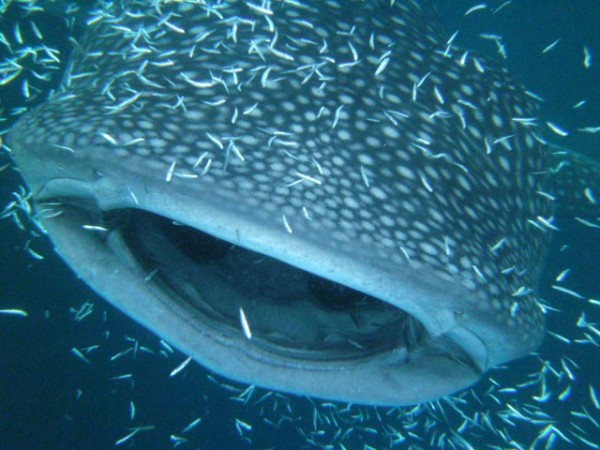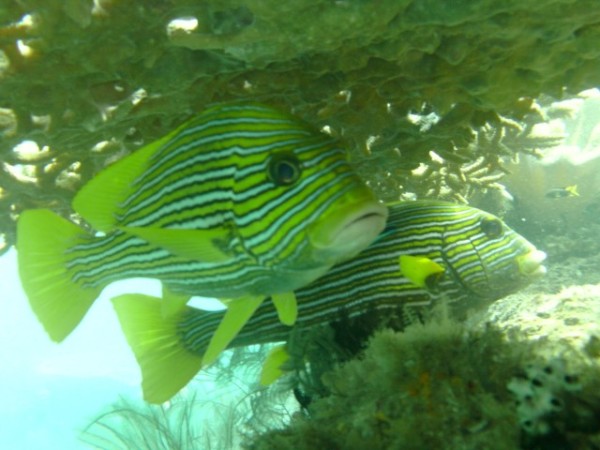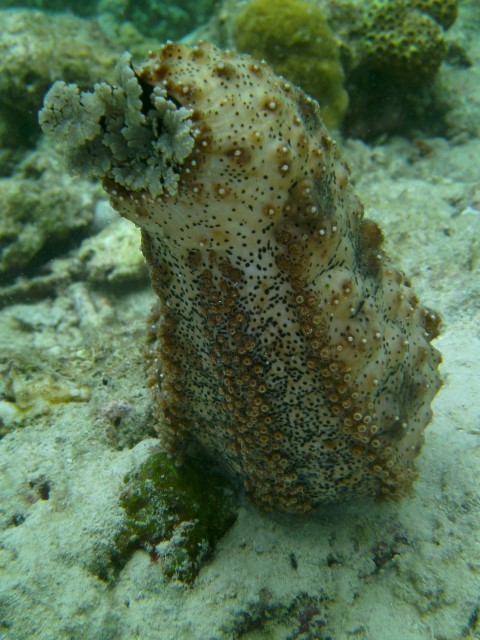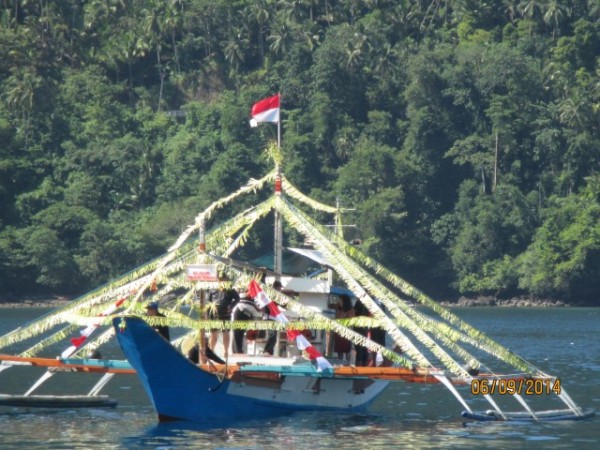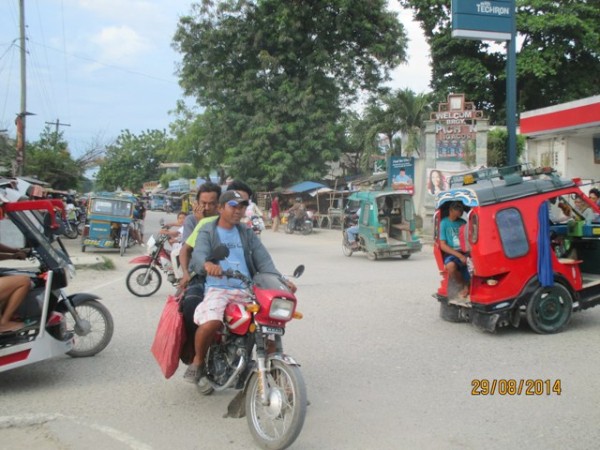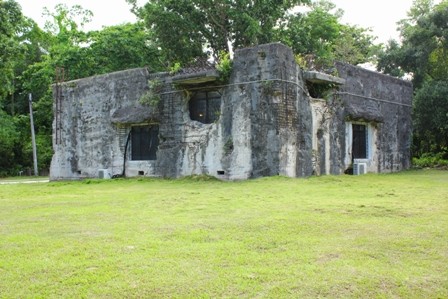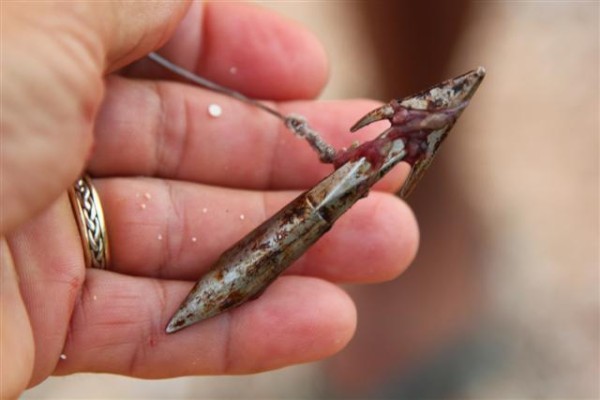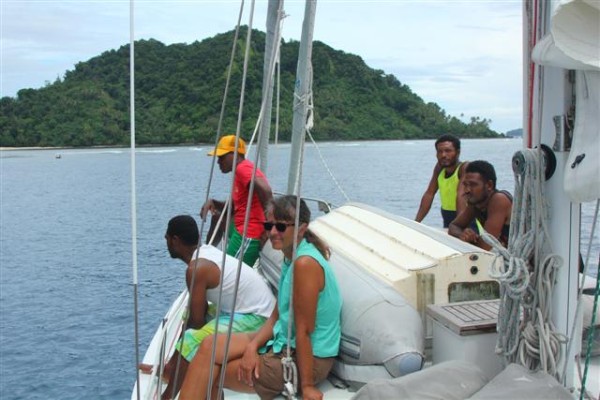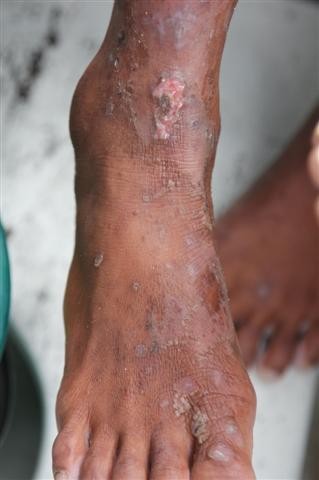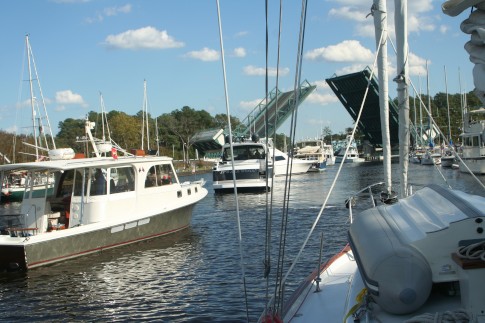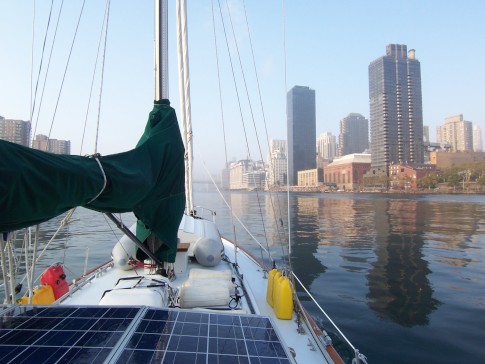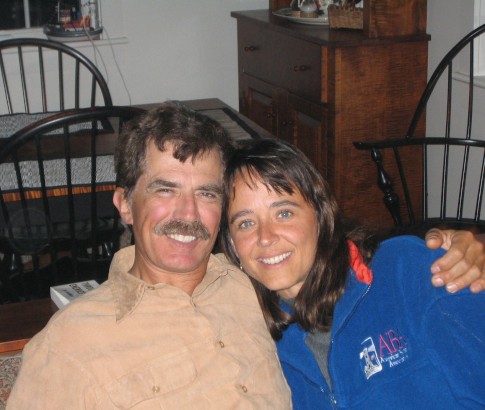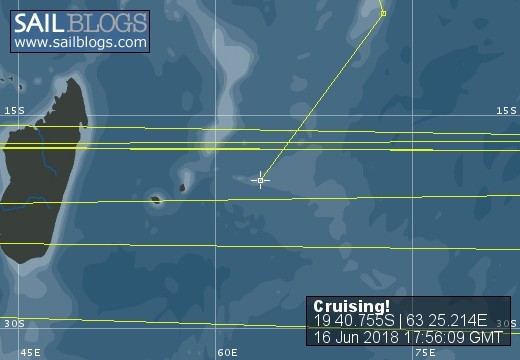
Where WAS Brick House...The First Eight Years
Please visit our NEW WEB SITE: http://WhereIsBrickHouse.com
20 April 2016
05 October 2015 | Malaysia, island of Borneo
19 September 2015 | Kuching/Santubong
30 July 2015
01 July 2015 | Bali, Indonesia
23 May 2015 | Bali, Indonesia
17 April 2015 | Venu Island
01 April 2015
12 March 2015 | Tioman
01 March 2015 | Papua, Indonesia
26 February 2015 | West Shore of Papua Indonesia
21 January 2015 | Raja Ampat, Indonesia
05 January 2015 | Gam and Waigeo, Raja Ampat
31 December 2014 | Misool, Indonesia
31 December 2014 | Masool, Indonesia
24 December 2014 | Indonesia
21 October 2014 | Philippines
04 June 2014 | Davao
17 April 2014 | Pacific
03 March 2014 | Pacific
In Davao City
21 October 2014 | Philippines
Patrick
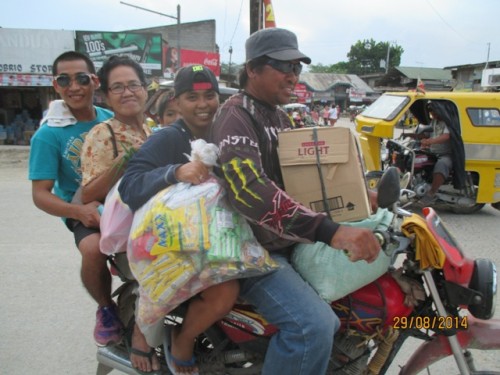
The typical family sedan..but there are
a lot of big SUVs clogging the streets.
IT HAS BEEN a while since we updated our blog. We have been sailing for 7 years now and have become lazy at writing down our adventures. This is partly due to the overwhelming reality that nearly every day something new and unique happens on our endless summer lifestyle so the uniqueness of writing about it has thinned.
Since being in the Philippines, we also flew to Australia for 3 weeks. We rented a small camper van and toured around north east Queensland from Cairns, north to Cooktown, west to Atherton, in the table lands, and south to Inisfail. If I had to live somewhere on land, that would be the place. Queensland has hills, waterfalls, a warm ocean, kangaroos and wild animals and not much of a human population. "Our biggest asset in Queensland is our lack of population" many locals like to say. Tropical in climate, Cairns is a tourist city with every thing one needs without the big city hassles. It would have been too expensive and difficult to get our sailboat there. Right now we are in Indonesia. The following blog entry will help get us caught up.
It has always seemed Filippino's were everywhere in the world. But I never gave it much thought. They are often the labor on cruise ships and freighters. Crossing the Pacific by sailboat, it became apparent Philippinos are equally, if not more, important terrestrially. In island nations, they are the doctors in the hospitals, the accountants and office managers and they are the skilled machinists and mechanics. The Philippinos are hard working well educated people. Because of U.S. tax payer handouts, natives of Palau, Federated States of Micronesia and the Marshall Islands, have little incentive to educate themselves and to work. The Philippinos are hired to keep things functioning.
In the Philippines, there are so many college graduates and so few jobs that not having such an education disqualifies one from a simple retail sales position in an upscale shopping mall. Semi skilled labor in the Philippines will earn about $11 per day. We have a Philippina (the "a" ending comes from the early Spanish influence) friend named Jem (short for Jemima and amazingly she has never heard of the pancakes). Jem is well educated and speaks English as though she grew up in Iowa rather than the north side of Manila. She can work for 5 years as a manager of a small hotel in the Marshall Islands then return home to pay cash for a house and live comfortably. People in America who collect welfare, food stamps and live in government housing live like vacationing kings compared to most people in the Philippines, and the rest of the world. In the Philippines, there are many rich Chinese who have a second home or come to vacation. And of course there are wealthy Philippinos who can afford the status of shopping at the air-conditioned, modern multi story malls which carry all the well known brands at prices equal or higher than in the U.S..
Poverty is certainly a relative term. In the city of Davao, the second largest city in the Philippines, there are miles large swaths of single story dwellings with corrugated tin roofs. Driving through Davao in a taxi or a cramped jeepney bus, makes me reminisce of the views over Saigon from a Huey helicopter in 1971. It was a wall to wall tin roof as far as the eye could see. Although not well off, by American standards, the people living under the tin roofs of Davao are not destitute. There are only a few beggars on the city streets in no higher proportion than one would find in New York City or Chicago. I was a little surprised one day when, with an outstretched hand, a beggar came to the window of our jeepney bus trapped in traffic. I had a nice imported red Delicious apple ready for the occasion. He handed the apple back to me with a squinched look to his eyes. He wanted money! The bums aren't that bad off in Devao. The panhandling children love the apples, candy or anything to put in their empty stomachs. One day I handed a fresh apple to a frail, wrinkled, lady sitting on the sidewalk, back resting against the building. With a negative shake of her head and eyes that immediately looked away, she seemed quite annoyed with the gift. Only as I passed down the block thinking about the reaction, I realized, she probably had no teeth! Oops.
Wherever we walked in Davao, we always felt safe. Even the locals say they like Davao City because of the hard line the government takes with criminals. Additionally, it is hard to find a scrap of paper on the streets or in the gutters. There is always someone patrolling with a long handled dust pan and a broom made of bundled reeds sweeping their assigned area. There is never a cigarette butt to be found either. You will not see anyone smoking in any public place including the streets as there are heavy fines for the transgression. This is a bad indication for Phillip Morris or Altria stock.
I don't like Davao City. There are few buildings over 2 stories high making it an extremely spread out city. It is bumper to bumper traffic all day and takes forever to get anywhere to accomplish a simple mission like going to the Unli Bolts store (Unli is a common term meaning "unlimited") to get stainless steel screws. Even though there are exhaust emission regulations and all the thousands of motorcycles must have 4 stroke engines, the city streets are smogged with exhaust fumes and dust. People hold squares of cloth to their nose and mouth. It is a perfect example of environmental regulations doing little good as the population will continue to expand and over shadow the restrictions.
Rebecca on the other hand loves the chaos of the city, wandering the streets and getting to know the public transport system to find everything we need. She connects and identifies with the Filipina ladies there, and finds herself in conversations on the busses, ferries and stores on a regular basis with people she just met. Being in Rebecca's proximity, adds greatly to my social interactions. In the city on my own, I only talk to a couple flirting women who are looking for a father for their children or smiling sales ladies who work on commission and want to charge an added 50% to the price tag that suddenly disappeared. But this is an extreme example. Most people in the city are very friendly and helpful.
Rebecca learned the public transport systems so well that one day we took a 3 hour, multiple route ride, way out to the suburbs to go to "Eagle Camp" which houses all the types of Philippine eagles as well as other types of birds, and even the local dear and monkeys. It was a nice day, but 6 hours of ferries, jeepneys (A small truck with a plank seat on each side and the low roof requires a normal sized American to sit with his head folded sideways onto his shoulder), and "habel-habel" (a motorcycle powered thing with a side car) rides was a little much.
The Philippinos love Americans and are very interested to hear about your home in the U.S.. They also want to know where in the Philippines we live. When we say in a new marina on the north end of Samal Island, which is just across the channel from Davao, they assume we are rich for there are many modest beach resorts and some comfortable but not extravagant houses on Samal. We are quick to tell them that we live on a simple 40' sailboat because we cannot afford all the overhead expenses of living in America. We tell them, the most frightening thing about if we ever returned to live again in America is that we would have to go back to work! It seems every where we go in the Philippines, there are the local prices and the tourist prices. We always try to dress and speak as modestly as possible.
The financial gap between the Philippino's and Europeans certainly elevates the status of anyone with European features. A rotund 75 year old Australian man with a sea farers white beard and who's keg sized belly blocks the view to his feet, shuffled along the marina dock with a stiff back and knees that would not bend much. Clutched tight to his arm is a most attractive and slim 30 year old Philippina. One would first think she is a hired care giver. She is the man's girlfriend. They live on an extra wide, shiny, trimaran with another aging Australian man and his much, much, younger Philippina friend. What a way to spend your golden years and who says you can't buy happiness! This is not at all unusual. Many European men can be seen walking the larger luxury shopping malls with an attractive Philippina friend or wife close to their side. All these women have several things in common. They are attractive, slim, speak very good to excellent English, mostly well educated, often with college degrees and most interestingly, they all wear skin tight jeans. It seems a fashion requirement to wear these jeans when visiting an upscale mall. The interest here is not only do they fill the jeans well but the incomprehensible ability to contort their feet, and everything above, into such a narrow wedge of denim. It must be a one time deal, like Chinese finger locks, requiring scissors or a knife for extraction. But teaming up with a local lady is a slippery slope. From the stories we have heard, the single lady association inexorably slides into giving little gifts to relatives who forever grow into having demanding medical bills and the need for money for clothing and food. If not careful, the gentlemanly European becomes the Santa Claus supporting generations of relatives. Maybe there is a safety valve to living on an escape pod like a trimaran.
Aside from completing a lot of cosmetic boat work, like new head liner made of PVC panels and varnishing of interior wood, while we were at the Oceanview Marina, we rented motorcycles a few times. You don't find anything here much bigger than a 150cc and anything bigger is a waste of power and expensive gasoline. For a fee of $5 plus gasoline, we rode the bikes all day to explore the dirt roads leading to waterfalls and country roads circling and crisscrossing Samal island.
We also enjoyed the social aspects of being in a marina. Wednesday nights sported a dinner prepared by a local couple, with games afterwards. Fridays were potluck nights, with everyone from the twenty or so boats contributing enough food to feed forty boats full of people. And not normal potluck staple food; the Philippina girlfriends of the cruising men, in particular, outdid themselves sparing no expense with international plates. Thank you Santas.
At the island of Palau, from where we come from 550 miles to the east, there were hordes of fly's and mosquitoes and other biting bugs. What a relief not to have this problem on Samal Island. At 430 miles north of the equator, maybe it was too hot for those bugs. It is actually cooler, due south, at the equator. The cabin fans in Brick House ran 24 hours a day to cool our perspiration. If we had to do it again, we would have followed the lead of other cruisers who bought a small air-conditioner to sit in an opened hatch. You would think Natural Selection or Adaptation would benefit the locals but the people are equally affected by the terrible heat as well. Any Philippino working outside covers completely in long sleeve shirts and long pants to protect from the harmful rays of the sun. But even if one does not work outside, a lighter shade of Philippino skin is preferable than a good tan. There are billboard advertisements for "skin lightening" creams.
Lily, the kitten we picked up in Palau, continued to grow up at the marina. We did our best to restrict her but once she found how to jump from the boat to the dock, a whole new world opened up for her and worry for us.
Whenever we have heard the words "yacht rally" we quickly sailed the other way or stayed ahead of the fleet. Too many yachts in one place, overwhelming a small village, is not a positive experience. Plus, too many inexperienced rally cruisers have little understanding of local economics in out of the way villages. A hand full of vegetables which should cost a dollar now is gladly bought for $10. "But that is what I would have paid in Sydney!" This time however we joined a rally of international yachts that was heading to the towns of Sangihe and Morotai on a southward sail to Indonesia. The Board Of Tourism in Indonesia simplified the government paperwork, made for free food, free diesel fuel, parties and other benefits making it worth while for us to join up. Ocean View marina was a part sponsor and worked hard at being a good one. The marina hosted cookouts, and a few trips to local tourist attractions in Devao. We had regular outings to the grocery stores in their van that were like a giant spending party (for provisions), and there seemed to be something new and exciting happening every day! The last week before departure, they had a, free, big party for us at a nearby resort with a great buffet dinner, traditional dancing and music which was a lot of fun. OceanView Marina is worth being at even if you don't go on the rally. But if you do work on your boat at Ocean View, bring all your bottom paint and materials with you.Kjarten, the marina manager, and his crew do good work at honest prices. They are the ones to trust there. We really have not sailed much around the Philippines but will come back with changing seasons and wind shifts after we wander off southwards to Indonesia. The Raja Ampat area is supposed to be some of the best diving and snorkeling in the world. We are still looking for an area to rival the Bahamas. Across the Pacific, we have found many good "spots" but overall, as the slogan says, "Its Better In The Bahamas".
I will try to add some more photos to a "Philippines" folder to the right side of this site in the Photo Albums or Photo Gallery
a lot of big SUVs clogging the streets.
IT HAS BEEN a while since we updated our blog. We have been sailing for 7 years now and have become lazy at writing down our adventures. This is partly due to the overwhelming reality that nearly every day something new and unique happens on our endless summer lifestyle so the uniqueness of writing about it has thinned.
Since being in the Philippines, we also flew to Australia for 3 weeks. We rented a small camper van and toured around north east Queensland from Cairns, north to Cooktown, west to Atherton, in the table lands, and south to Inisfail. If I had to live somewhere on land, that would be the place. Queensland has hills, waterfalls, a warm ocean, kangaroos and wild animals and not much of a human population. "Our biggest asset in Queensland is our lack of population" many locals like to say. Tropical in climate, Cairns is a tourist city with every thing one needs without the big city hassles. It would have been too expensive and difficult to get our sailboat there. Right now we are in Indonesia. The following blog entry will help get us caught up.
It has always seemed Filippino's were everywhere in the world. But I never gave it much thought. They are often the labor on cruise ships and freighters. Crossing the Pacific by sailboat, it became apparent Philippinos are equally, if not more, important terrestrially. In island nations, they are the doctors in the hospitals, the accountants and office managers and they are the skilled machinists and mechanics. The Philippinos are hard working well educated people. Because of U.S. tax payer handouts, natives of Palau, Federated States of Micronesia and the Marshall Islands, have little incentive to educate themselves and to work. The Philippinos are hired to keep things functioning.
In the Philippines, there are so many college graduates and so few jobs that not having such an education disqualifies one from a simple retail sales position in an upscale shopping mall. Semi skilled labor in the Philippines will earn about $11 per day. We have a Philippina (the "a" ending comes from the early Spanish influence) friend named Jem (short for Jemima and amazingly she has never heard of the pancakes). Jem is well educated and speaks English as though she grew up in Iowa rather than the north side of Manila. She can work for 5 years as a manager of a small hotel in the Marshall Islands then return home to pay cash for a house and live comfortably. People in America who collect welfare, food stamps and live in government housing live like vacationing kings compared to most people in the Philippines, and the rest of the world. In the Philippines, there are many rich Chinese who have a second home or come to vacation. And of course there are wealthy Philippinos who can afford the status of shopping at the air-conditioned, modern multi story malls which carry all the well known brands at prices equal or higher than in the U.S..
Poverty is certainly a relative term. In the city of Davao, the second largest city in the Philippines, there are miles large swaths of single story dwellings with corrugated tin roofs. Driving through Davao in a taxi or a cramped jeepney bus, makes me reminisce of the views over Saigon from a Huey helicopter in 1971. It was a wall to wall tin roof as far as the eye could see. Although not well off, by American standards, the people living under the tin roofs of Davao are not destitute. There are only a few beggars on the city streets in no higher proportion than one would find in New York City or Chicago. I was a little surprised one day when, with an outstretched hand, a beggar came to the window of our jeepney bus trapped in traffic. I had a nice imported red Delicious apple ready for the occasion. He handed the apple back to me with a squinched look to his eyes. He wanted money! The bums aren't that bad off in Devao. The panhandling children love the apples, candy or anything to put in their empty stomachs. One day I handed a fresh apple to a frail, wrinkled, lady sitting on the sidewalk, back resting against the building. With a negative shake of her head and eyes that immediately looked away, she seemed quite annoyed with the gift. Only as I passed down the block thinking about the reaction, I realized, she probably had no teeth! Oops.
Wherever we walked in Davao, we always felt safe. Even the locals say they like Davao City because of the hard line the government takes with criminals. Additionally, it is hard to find a scrap of paper on the streets or in the gutters. There is always someone patrolling with a long handled dust pan and a broom made of bundled reeds sweeping their assigned area. There is never a cigarette butt to be found either. You will not see anyone smoking in any public place including the streets as there are heavy fines for the transgression. This is a bad indication for Phillip Morris or Altria stock.
I don't like Davao City. There are few buildings over 2 stories high making it an extremely spread out city. It is bumper to bumper traffic all day and takes forever to get anywhere to accomplish a simple mission like going to the Unli Bolts store (Unli is a common term meaning "unlimited") to get stainless steel screws. Even though there are exhaust emission regulations and all the thousands of motorcycles must have 4 stroke engines, the city streets are smogged with exhaust fumes and dust. People hold squares of cloth to their nose and mouth. It is a perfect example of environmental regulations doing little good as the population will continue to expand and over shadow the restrictions.
Rebecca on the other hand loves the chaos of the city, wandering the streets and getting to know the public transport system to find everything we need. She connects and identifies with the Filipina ladies there, and finds herself in conversations on the busses, ferries and stores on a regular basis with people she just met. Being in Rebecca's proximity, adds greatly to my social interactions. In the city on my own, I only talk to a couple flirting women who are looking for a father for their children or smiling sales ladies who work on commission and want to charge an added 50% to the price tag that suddenly disappeared. But this is an extreme example. Most people in the city are very friendly and helpful.
Rebecca learned the public transport systems so well that one day we took a 3 hour, multiple route ride, way out to the suburbs to go to "Eagle Camp" which houses all the types of Philippine eagles as well as other types of birds, and even the local dear and monkeys. It was a nice day, but 6 hours of ferries, jeepneys (A small truck with a plank seat on each side and the low roof requires a normal sized American to sit with his head folded sideways onto his shoulder), and "habel-habel" (a motorcycle powered thing with a side car) rides was a little much.
The Philippinos love Americans and are very interested to hear about your home in the U.S.. They also want to know where in the Philippines we live. When we say in a new marina on the north end of Samal Island, which is just across the channel from Davao, they assume we are rich for there are many modest beach resorts and some comfortable but not extravagant houses on Samal. We are quick to tell them that we live on a simple 40' sailboat because we cannot afford all the overhead expenses of living in America. We tell them, the most frightening thing about if we ever returned to live again in America is that we would have to go back to work! It seems every where we go in the Philippines, there are the local prices and the tourist prices. We always try to dress and speak as modestly as possible.
The financial gap between the Philippino's and Europeans certainly elevates the status of anyone with European features. A rotund 75 year old Australian man with a sea farers white beard and who's keg sized belly blocks the view to his feet, shuffled along the marina dock with a stiff back and knees that would not bend much. Clutched tight to his arm is a most attractive and slim 30 year old Philippina. One would first think she is a hired care giver. She is the man's girlfriend. They live on an extra wide, shiny, trimaran with another aging Australian man and his much, much, younger Philippina friend. What a way to spend your golden years and who says you can't buy happiness! This is not at all unusual. Many European men can be seen walking the larger luxury shopping malls with an attractive Philippina friend or wife close to their side. All these women have several things in common. They are attractive, slim, speak very good to excellent English, mostly well educated, often with college degrees and most interestingly, they all wear skin tight jeans. It seems a fashion requirement to wear these jeans when visiting an upscale mall. The interest here is not only do they fill the jeans well but the incomprehensible ability to contort their feet, and everything above, into such a narrow wedge of denim. It must be a one time deal, like Chinese finger locks, requiring scissors or a knife for extraction. But teaming up with a local lady is a slippery slope. From the stories we have heard, the single lady association inexorably slides into giving little gifts to relatives who forever grow into having demanding medical bills and the need for money for clothing and food. If not careful, the gentlemanly European becomes the Santa Claus supporting generations of relatives. Maybe there is a safety valve to living on an escape pod like a trimaran.
Aside from completing a lot of cosmetic boat work, like new head liner made of PVC panels and varnishing of interior wood, while we were at the Oceanview Marina, we rented motorcycles a few times. You don't find anything here much bigger than a 150cc and anything bigger is a waste of power and expensive gasoline. For a fee of $5 plus gasoline, we rode the bikes all day to explore the dirt roads leading to waterfalls and country roads circling and crisscrossing Samal island.
We also enjoyed the social aspects of being in a marina. Wednesday nights sported a dinner prepared by a local couple, with games afterwards. Fridays were potluck nights, with everyone from the twenty or so boats contributing enough food to feed forty boats full of people. And not normal potluck staple food; the Philippina girlfriends of the cruising men, in particular, outdid themselves sparing no expense with international plates. Thank you Santas.
At the island of Palau, from where we come from 550 miles to the east, there were hordes of fly's and mosquitoes and other biting bugs. What a relief not to have this problem on Samal Island. At 430 miles north of the equator, maybe it was too hot for those bugs. It is actually cooler, due south, at the equator. The cabin fans in Brick House ran 24 hours a day to cool our perspiration. If we had to do it again, we would have followed the lead of other cruisers who bought a small air-conditioner to sit in an opened hatch. You would think Natural Selection or Adaptation would benefit the locals but the people are equally affected by the terrible heat as well. Any Philippino working outside covers completely in long sleeve shirts and long pants to protect from the harmful rays of the sun. But even if one does not work outside, a lighter shade of Philippino skin is preferable than a good tan. There are billboard advertisements for "skin lightening" creams.
Lily, the kitten we picked up in Palau, continued to grow up at the marina. We did our best to restrict her but once she found how to jump from the boat to the dock, a whole new world opened up for her and worry for us.
Whenever we have heard the words "yacht rally" we quickly sailed the other way or stayed ahead of the fleet. Too many yachts in one place, overwhelming a small village, is not a positive experience. Plus, too many inexperienced rally cruisers have little understanding of local economics in out of the way villages. A hand full of vegetables which should cost a dollar now is gladly bought for $10. "But that is what I would have paid in Sydney!" This time however we joined a rally of international yachts that was heading to the towns of Sangihe and Morotai on a southward sail to Indonesia. The Board Of Tourism in Indonesia simplified the government paperwork, made for free food, free diesel fuel, parties and other benefits making it worth while for us to join up. Ocean View marina was a part sponsor and worked hard at being a good one. The marina hosted cookouts, and a few trips to local tourist attractions in Devao. We had regular outings to the grocery stores in their van that were like a giant spending party (for provisions), and there seemed to be something new and exciting happening every day! The last week before departure, they had a, free, big party for us at a nearby resort with a great buffet dinner, traditional dancing and music which was a lot of fun. OceanView Marina is worth being at even if you don't go on the rally. But if you do work on your boat at Ocean View, bring all your bottom paint and materials with you.Kjarten, the marina manager, and his crew do good work at honest prices. They are the ones to trust there. We really have not sailed much around the Philippines but will come back with changing seasons and wind shifts after we wander off southwards to Indonesia. The Raja Ampat area is supposed to be some of the best diving and snorkeling in the world. We are still looking for an area to rival the Bahamas. Across the Pacific, we have found many good "spots" but overall, as the slogan says, "Its Better In The Bahamas".
I will try to add some more photos to a "Philippines" folder to the right side of this site in the Photo Albums or Photo Gallery
| Vessel Name: | Brick House |
| Vessel Make/Model: | Valiant 40 #134 |
| Hailing Port: | Middletown, RI USA |
| Crew: | Patrick and Rebecca Childress |
| Extra: | |
| Home Page: | http://www.whereisbrickhouse.com |
| Social: |
Brick House 's Photos - (Main)
Brick House Crew
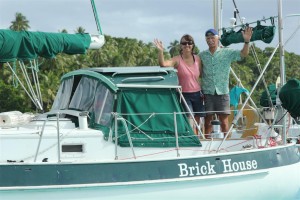
Who: Patrick and Rebecca Childress
Port: Middletown, RI USA
Where IS Brick House?!?
What Brick House Chose
- Citimarine Store
- WHAT BRICK HOUSE CHOSE
- Where Is Brick House now? (Link to Current Web Site)
- Alpenglow LED lights
- Mantus Anchor Hook
- Mantus Anchor Swivel
- SeaBreathe - Snorkelling/Boat Bottom Cleaning
- Sealife Cameras -DC1400 and Mini II
- Mack Sails for our new Genoa and Staysail
- Allied Titanium for our new Chainplates and more
- Ballenger Spars:Our new mast and rigging
- TackTick Wireless Instruments ( now Raymarine)
- Sewing Machine: Barracuda 2000U-33
- Tides Marine (STRONG) Track System
- Dry Bags- Seattle Sport Co.
- Barracuda Sewing Machine
- Sailrite for Accessories etc for most sewing machines
- ACR Electronics
- Brick House Articles Now Available
- Feathering Kiwiprop
- Our favorite Chandlery
- ProFurl Roller Furlers
- Personal AIS Transponder - Kannad Marine Safelink R10 SRS
- Vespermarine AISWatchmate
- Calibre Sails New Mainsail etc
- Edson High Capacity Pump
- Lofrans/Imtra Tigres Windlass
- RayMarine Autopilot, Chartplotter and Radar
- Navionics Charts for laptop and Chartplotter
- SHADETREE awnings
- Monitor Windvane
- Seafrost Freezer/Fridge
- Follow Our Track on Winlink
- Brick House Theme Song
- Secure WiFi Connections
- Seven Seas Cruising Organization
- Bluewater Sailing Magazine
- SAIL Magazine
- Want to Crew?



